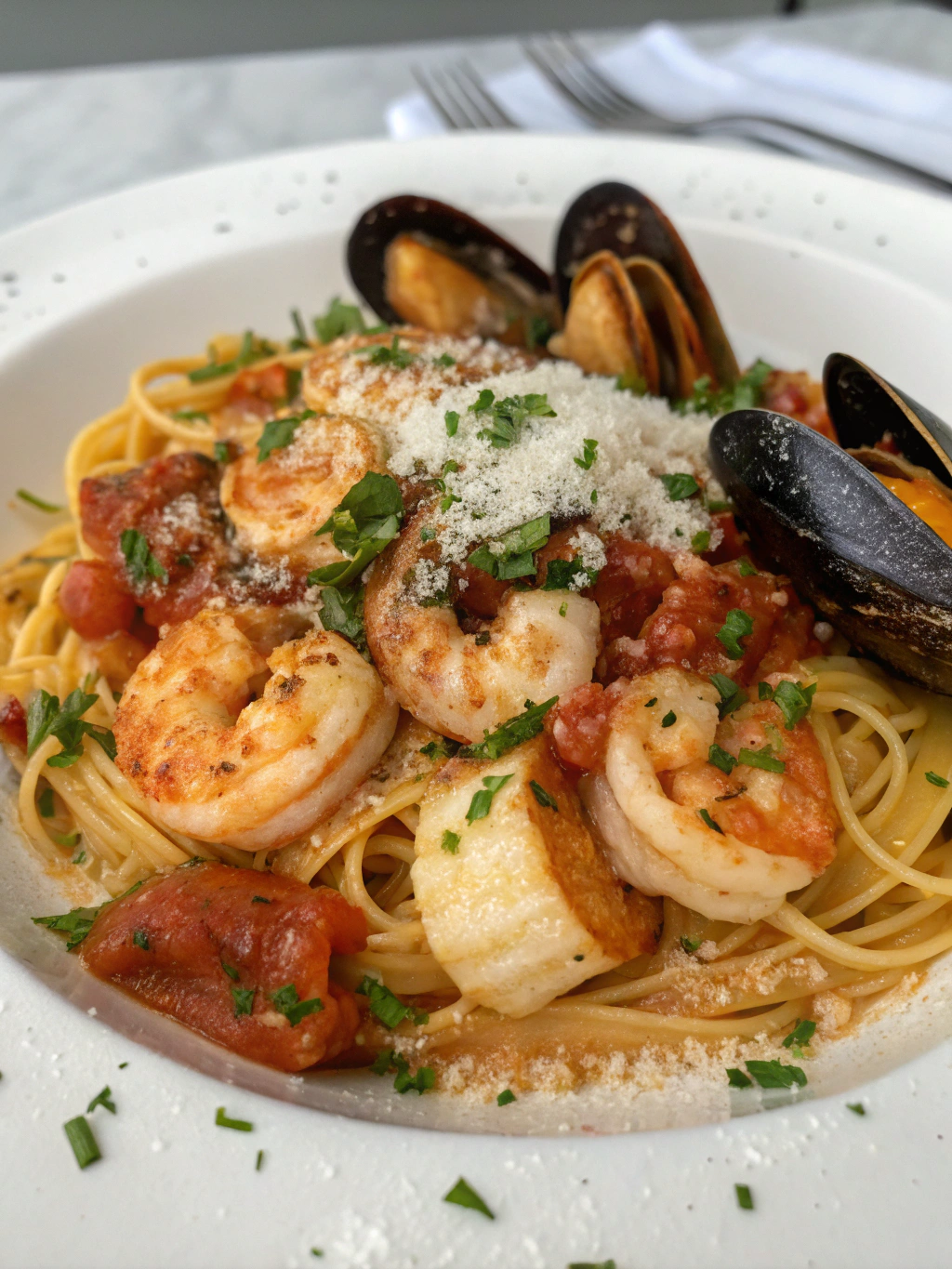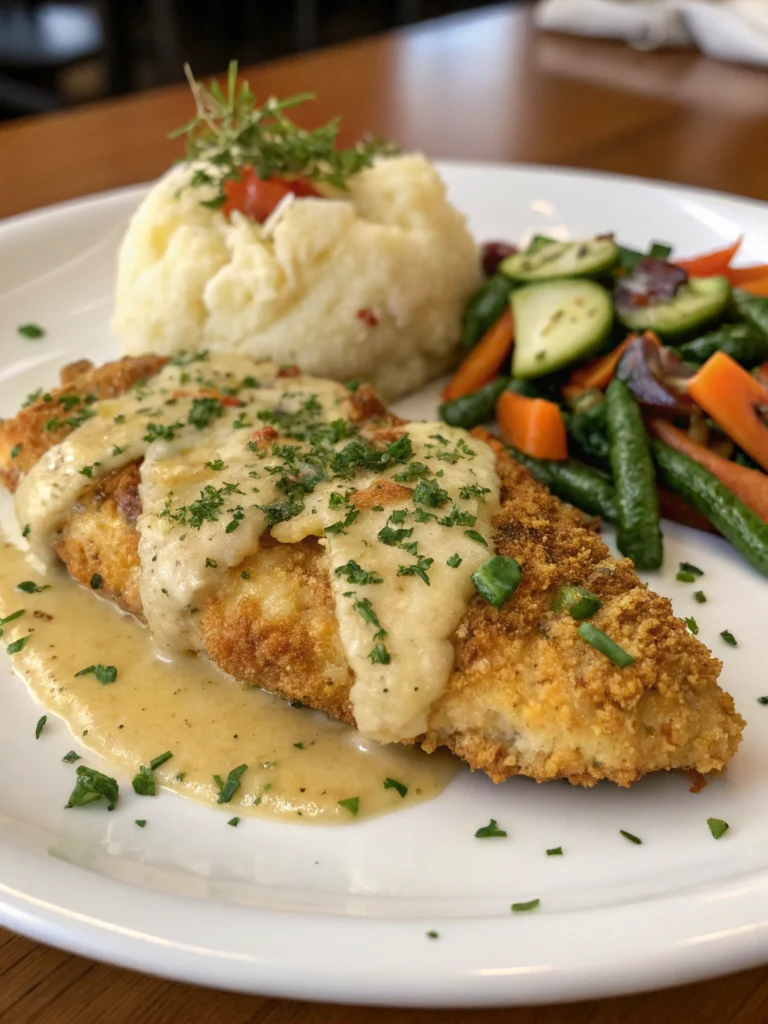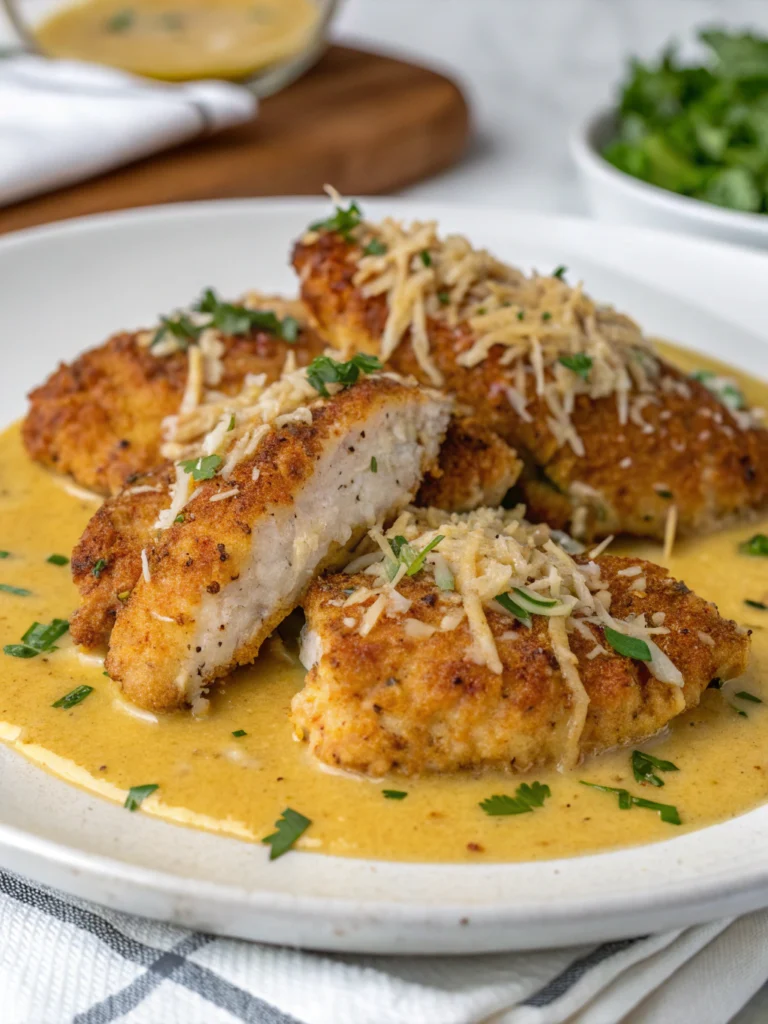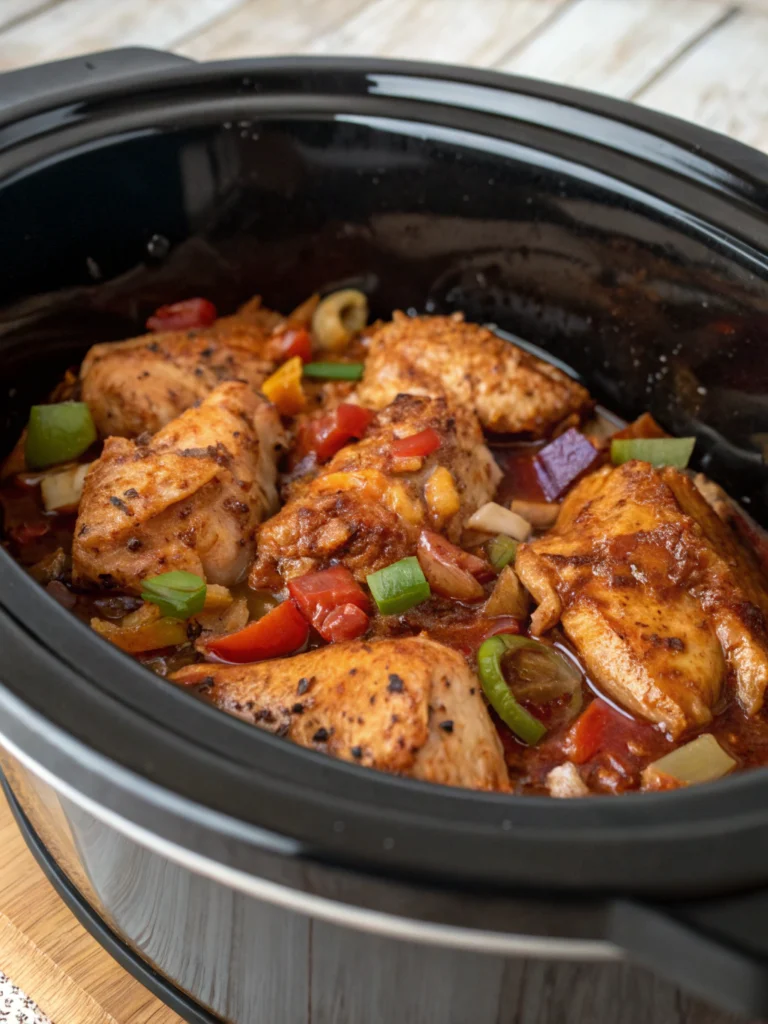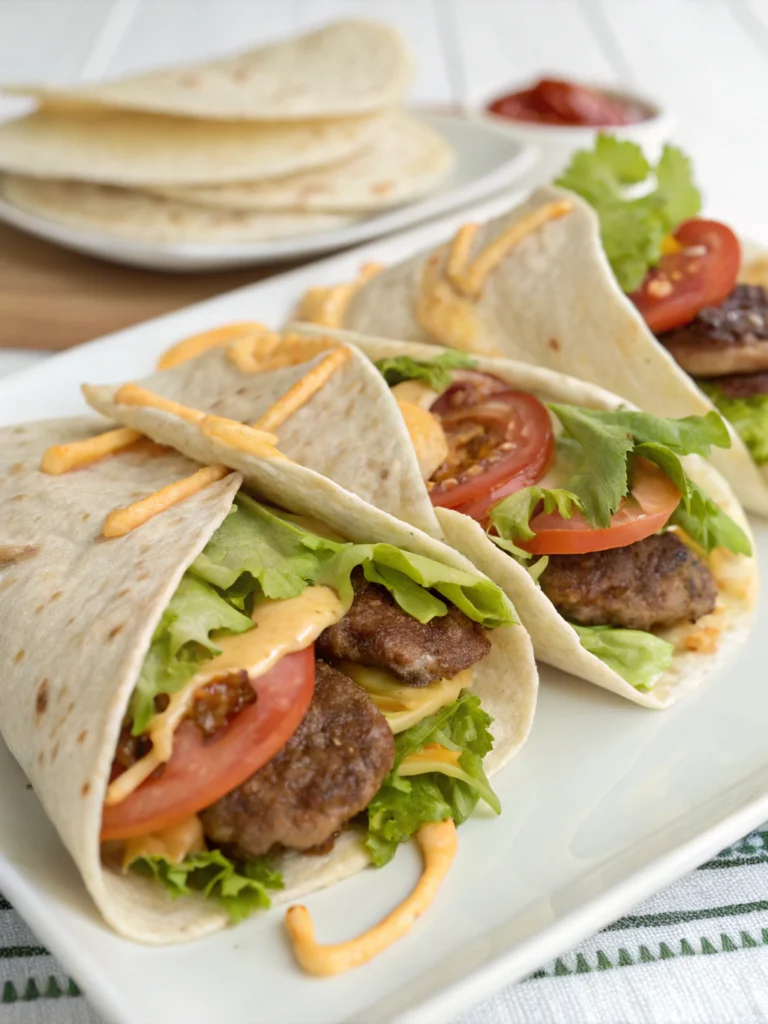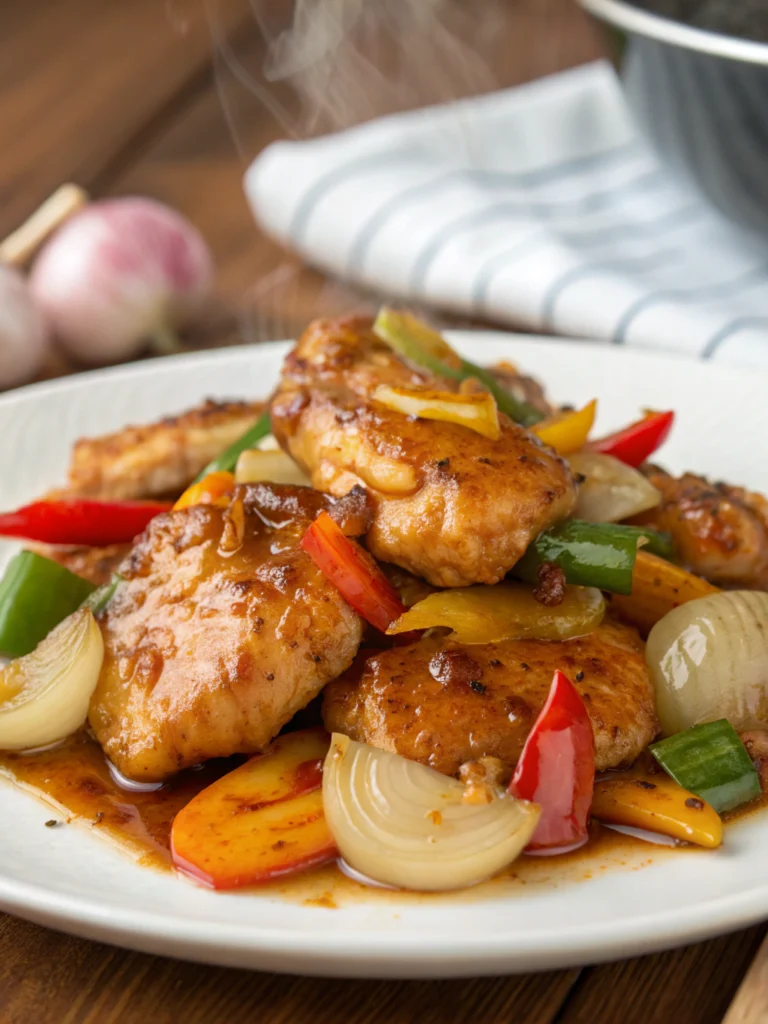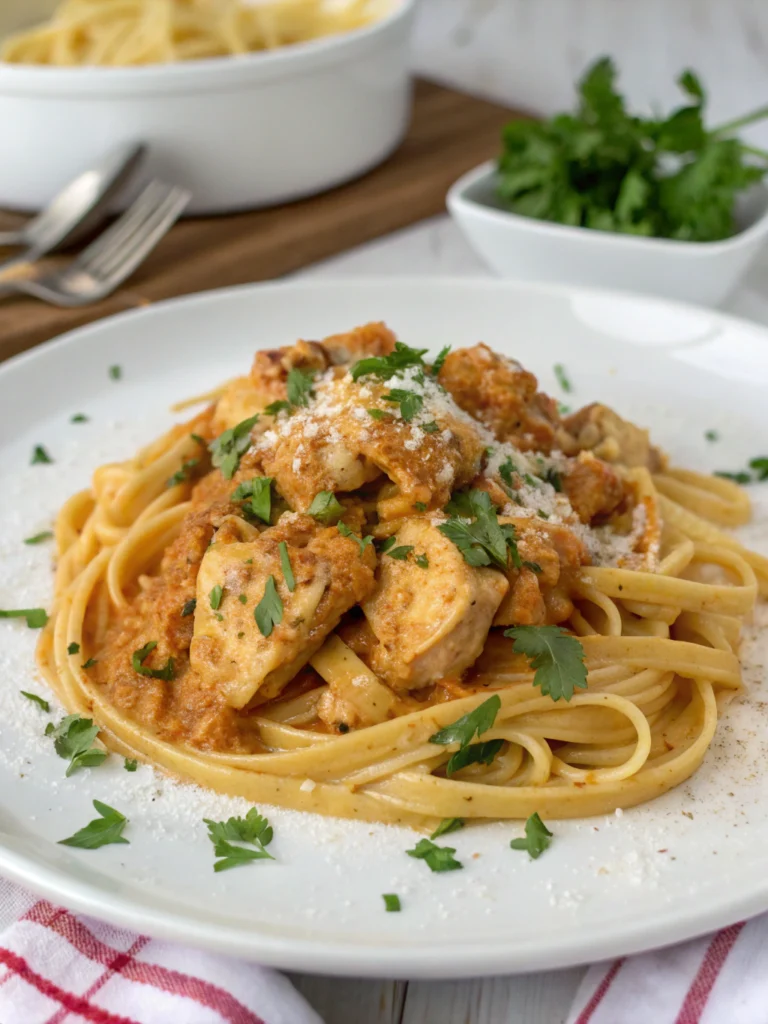Seafood Pasta
A luscious, restaurant-quality dish featuring tender shellfish, al dente pasta, and a rich, garlicky white wine sauce that comes together in just 30 minutes. This seafood pasta balances delicate ocean flavors with bold Italian seasonings for an impressive yet approachable dinner.
Easy Seafood Pasta Recipe
There’s something undeniably special about a well-executed seafood pasta. This Mediterranean-inspired classic transforms everyday pasta into an extraordinary meal that feels both indulgent and comforting. What makes this recipe stand out is its perfect balance of flavors—sweet shellfish, aromatic herbs, and a silky sauce that clings to every strand of pasta.
Seafood pasta has deep roots in coastal Italian cuisine, where fishermen would combine the day’s fresh catch with simple pantry staples. This tradition of celebrating seafood at its freshest point is particularly relevant during summer months when lighter, brighter dishes take center stage on our tables.
THIS RECIPE:
- Features a customizable mix of shrimp, scallops, and mussels in a garlic white wine sauce
- Comes together in just 30 minutes for a quick yet impressive weeknight dinner
- Uses easy-to-find ingredients from your local supermarket
- Works with any long pasta shape (linguine, spaghetti, or fettuccine)
| Recipe Details | |
|---|---|
| Prep Time | 15 minutes |
| Cook Time | 15 minutes |
| Total Time | 30 minutes |
| Servings | 4 servings |
| Yield | 4 main dish portions |
This seafood pasta recipe strikes the perfect balance between elegance and simplicity. The sauce—a beautiful marriage of garlic, white wine, butter and herbs—comes together in the time it takes to boil your pasta. Even if you’re new to cooking seafood at home, the straightforward technique ensures restaurant-quality results without any complicated steps or specialty equipment.
Ingredients for Seafood Pasta
The secret to exceptional seafood pasta lies in the quality of your ingredients. Fresh seafood makes all the difference in this dish, though high-quality frozen options can work wonderfully when properly thawed. For the best flavor, look for shellfish that smells like the ocean—fresh and clean, never fishy.
For the Pasta:
- 12 ounces linguine (or spaghetti, fettuccine)
- 2 tablespoons kosher salt (for pasta water)
For the Seafood:
- 8 ounces large shrimp, peeled and deveined
- 8 ounces bay scallops (or quartered sea scallops)
- 12 ounces mussels, scrubbed and debearded (about 1 pound)
- 2 tablespoons olive oil
- 1/4 teaspoon sea salt
- 1/4 teaspoon black pepper
For the Sauce:
- 3 tablespoons unsalted butter
- 4 cloves garlic, minced
- 1/4 teaspoon red pepper flakes (adjust to taste)
- 3/4 cup dry white wine (like Pinot Grigio or Sauvignon Blanc)
- 1/2 cup seafood stock (or chicken stock)
- Juice of 1 lemon (about 2 tablespoons)
- 2 tablespoons fresh parsley, chopped
- 1 tablespoon fresh basil, thinly sliced
- Salt and freshly ground black pepper, to taste
For Garnish:
- Extra virgin olive oil, for drizzling
- Additional fresh herbs
- Lemon wedges
| Ingredient Category | Recommended Quantity | Quality Tips |
|---|---|---|
| Shellfish | 1.5-2 pounds mixed | Look for shrimp with translucent shells, scallops that are slightly firm with sweet smell, and mussels with tightly closed shells |
| Pasta | 12 ounces dried | Choose bronze-die extruded pasta for better sauce adherence |
| White wine | 3/4 cup | Use a wine you’d drink; avoid “cooking wine” |
| Fresh herbs | 3-4 tablespoons | Fresh herbs are essential; dried won’t provide the same bright finish |
| Garlic | 4 cloves | Look for firm bulbs with no sprouting for the freshest flavor |
How to Make Seafood Pasta
Creating the perfect seafood pasta is all about timing and technique. The process happens quickly once you begin cooking, so having all ingredients prepped and ready ensures seamless execution. The goal is to cook each component just until done—overcooked seafood can quickly become tough and rubbery.
Prepare your pasta water: Fill a large pot with water, add 2 tablespoons kosher salt, and bring to a rolling boil.
Prep the seafood:
- Pat shrimp and scallops dry with paper towels (this ensures proper searing)
- Season seafood with salt and pepper
- Check mussels and discard any with cracked shells or those that don’t close when tapped
Cook the pasta:
- Add linguine to boiling water and cook until 1 minute shy of package directions (it will finish cooking in the sauce)
- Reserve 1/2 cup pasta water before draining
Cook the seafood:
- Heat olive oil in a large skillet over medium-high heat until shimmering
- Add shrimp and scallops in a single layer (work in batches if needed to avoid overcrowding)
- Sear for 1-2 minutes per side until just opaque
- Remove seafood to a plate and tent with foil
Make the sauce:
- In the same pan, reduce heat to medium and add butter
- When butter is melted, add minced garlic and red pepper flakes
- Cook for 30-60 seconds until fragrant but not browned
- Pour in white wine and seafood stock, scraping up any browned bits from the pan
- Let simmer and reduce by half, about 3-4 minutes
Cook the mussels:
- Add mussels to the sauce, cover and cook for 3-4 minutes until shells open
- Remove cover and discard any mussels that haven’t opened
Combine everything:
- Return shrimp and scallops to the pan
- Add drained pasta and toss to coat, adding reserved pasta water as needed to create a silky sauce
- Stir in lemon juice and herbs
- Taste and adjust seasoning with salt and pepper
Finish and serve:
- Remove from heat
- Let stand uncovered for 1 minute to allow flavors to meld
- Serve immediately, garnished with additional herbs, a drizzle of olive oil, and lemon wedges
Pro tip: For perfectly cooked seafood, remember that residual heat continues cooking even after removing from the pan. Remove seafood when it’s just shy of fully cooked for the best texture in the final dish.
Tips for Making Seafood Pasta
Creating restaurant-quality seafood pasta at home is all about understanding a few key principles that professional chefs follow.
- Don’t overcook the seafood – This is the single most important rule; seafood continues cooking from residual heat
- Pat seafood dry before cooking – This ensures proper browning rather than steaming
- Use the same pan throughout – Building layers of flavor in one pan creates a more complex final sauce
- Cook pasta just shy of al dente – It will finish cooking in the sauce for perfect texture
| Technique | Recommendation | Why It Works |
|---|---|---|
| Seafood Cooking | Sear quickly over high heat | Develops flavor while keeping interior tender |
| Pasta Doneness | Cook 1 minute shy of package directions | Allows pasta to absorb sauce without becoming mushy |
| Wine Reduction | Reduce by half before adding seafood | Concentrates flavor and cooks off alcohol |
| Emulsification | Toss pasta with sauce using tongs | Creates silky texture that coats every strand |
When working with mussels, proper cleaning is crucial. Scrub the shells under cold water and remove the “beard” (the stringy material sometimes protruding from the shell) by pulling it toward the hinge end of the mussel. Fresh mussels should be tightly closed or close when tapped lightly—this indicates they’re alive and safe to eat.
The pasta cooking water is liquid gold in this recipe. The starch-rich water helps emulsify the sauce, creating that silky restaurant-quality texture that clings perfectly to the pasta.
Make-Ahead Instructions
Seafood pasta is best enjoyed fresh, but you can prepare components in advance to streamline the cooking process:
You can clean and prep all seafood up to 8 hours before cooking. Store shrimp and scallops on a plate lined with paper towels in the refrigerator to keep them dry. Mussels can be cleaned, debearded, and stored in a bowl covered with a damp paper towel (never submerged in water) for up to 24 hours in the refrigerator.
The garlic can be minced and herbs chopped up to 8 hours in advance. Store in separate airtight containers in the refrigerator.
Measure out all other ingredients and have them ready to go beside the stove for a seamless cooking experience.
For dinner party situations, you can par-cook the pasta up to 2 hours in advance. Cook it for 2-3 minutes less than package directions, drain, toss with a small amount of olive oil to prevent sticking, and refrigerate. When ready to serve, the pasta will finish cooking in the sauce.
Storing Leftovers
Seafood pasta is at its absolute best when served immediately, but leftovers can still be enjoyable if stored properly:
Allow leftover pasta to cool completely but don’t leave at room temperature for more than 1 hour. Food safety is particularly important with seafood dishes.
Transfer leftovers to an airtight container and refrigerate for up to 2 days. Glass containers are ideal as they won’t absorb seafood odors.
When reheating, add a splash of water or stock to the pasta and cover. Heat gently in a skillet over medium-low heat or microwave at 50% power in 30-second intervals, stirring between each interval.
Pro tip: If you anticipate having leftovers, consider removing the mussels from their shells before storing as they can develop a stronger flavor after refrigeration.
Freezing Seafood Pasta
Generally, seafood pasta doesn’t freeze well after it’s been fully prepared, as both the seafood and pasta textures can deteriorate. However, if you need to freeze it:
Undercook the pasta slightly before freezing to prevent mushiness when reheated. Cool the dish completely before freezing.
Store in an airtight, freezer-safe container for up to 1 month. Vacuum-sealed packaging works best to prevent freezer burn.
For best results when freezing, consider removing mussels from their shells first. Alternatively, you might want to freeze the sauce with seafood separately from the pasta.
When ready to use, thaw overnight in the refrigerator—never at room temperature. Reheat gently in a covered pan with a splash of water or stock to restore moisture.
Serving Suggestions
Seafood pasta makes for a stunning centerpiece to any meal, but a few thoughtful accompaniments can elevate it even further:
Side dishes:
- A simple arugula salad with lemon vinaigrette provides a peppery counterpoint
- Garlic bread or crusty Italian bread for soaking up the delicious sauce
- Roasted asparagus or broccolini adds a vegetable element without competing with the seafood flavors
For presentation, serve in wide, shallow bowls to showcase the beautiful seafood. Arrange mussels around the edge of the bowl with their shells pointing upward and place shrimp and scallops throughout the pasta. A final drizzle of your best extra-virgin olive oil and a sprinkle of fresh herbs adds restaurant-style flourish.
The ideal wine pairing is a crisp, unoaked white wine—the same style you used in the sauce. A Pinot Grigio, Sauvignon Blanc, or Vermentino all complement the delicate seafood flavors without overpowering them.
Serve at hot but not scalding temperature to preserve the texture of the seafood and allow the aromas to fully develop.
FAQ
Can I use frozen seafood for this seafood pasta recipe?
Yes, high-quality frozen seafood works well in this recipe. Thaw completely in the refrigerator overnight and pat dry thoroughly before cooking. Frozen seafood often releases more moisture during cooking, so you may need to cook it slightly longer to evaporate excess liquid before moving to the next step.
What can I substitute for the wine in seafood pasta?
If you prefer not to use wine, substitute with additional seafood stock plus 1 tablespoon of fresh lemon juice to add acidity. For depth of flavor, add a teaspoon of white wine vinegar or a splash of bottled clam juice. The dish will have a slightly different profile but will still be delicious.
Can I make seafood pasta with a red sauce instead?
Absolutely! For a tomato-based seafood pasta, sauté the garlic in olive oil, then add a can of crushed tomatoes instead of the wine and stock. Simmer for 10 minutes before adding seafood, and consider adding a tablespoon of tomato paste for depth of flavor. Finish with the same fresh herbs for brightness.
How do I know when my seafood is properly cooked?
Properly cooked seafood makes all the difference in this dish. Shrimp are done when they turn pink and form a “C” shape (overcooked shrimp curl into a tight “O”). Scallops should be slightly firm and opaque but still moist inside. Mussels are ready when their shells open—always discard any that remain closed after cooking as they shouldn’t be eaten.
Can I make this seafood pasta dairy-free?
Yes, substitute the butter with additional olive oil or a high-quality dairy-free butter alternative. The dish will have a slightly different flavor profile but will still be delicious. You can add a touch of nutritional yeast for richness if desired.

